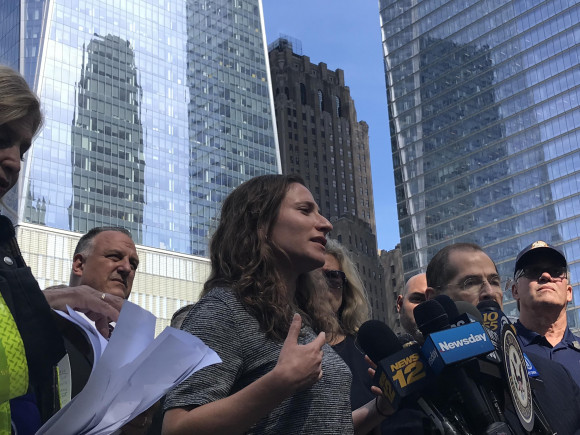WHAT'S GOING ON? The Labor & Health Report with Julianna Forlano 08-8-25
Listen NowIn this episode, we are joined by Anne Marie Principe, a 9/11 WTC health advocate who has been assisting first responders and others whose health was affected on 9/11 to navigate the extremely challenging maze of bureaucracy in order to obtain the care they are entitled to.
A common feeling among this 9/11 WTC cohort is that the system designed to “help” them is dominated by red tape that seems likely to hasten their demise. As Bob Hennelly once said, “Like the veterans who were ordered to charge into atmospheric atomic testing or were exposed to Agent Orange during Vietnam, our system is at best ambivalent about their plight and sometimes downright hostile.”
Principe says the 9/11 WTC Health Program was already showing signs of stress before President Trump and Health and Education Secretary Robert F. Kennedy cut the program that runs under the auspices of the CDC and NIOSH.
Now, Principe recounts how she faces a recurrence of her cancer amidst reprisals for her demanding greater accountability from the program her activism helped establish.
Three days after the 9/11 attack, former New Jersey Governor Christine Todd Whitman, then-head of the Environmental Protection Agency, told reporters that “the good news continues to be that air samples we have taken have all been at levels that cause us no concern.”
That upbeat and false statement was uttered as the fires at the World Trade Center site continued to burn and smolder — as they would for months after the Towers collapsed — casting a hazy, toxic pallor over the southern tip of Manhattan that lingered in the lungs of residents.
Undoubtedly, Whitman’s reassurance and the encouraging EPA press releases — along with then Mayor Rudolph Giuliani’s cheerleading — helped Wall Street and lower Manhattan’s businesses and schools reopen so quickly. Within a few years, though, the revelation began to sink in that the danger had not passed. Thousands were becoming sick and dying from their exposure to the unique cocktail of abrasive toxins released by the collapse and fires that followed.
Two years after 9/11, an investigation by the EPA Inspector General found that the EPA “did not have sufficient data and analyses to make such a blanket statement” as it did at the time.
“Air monitoring data was lacking for several pollutants of concern,” the inspector general concluded. Moreover, the Office of the Inspector General revealed that President George W. Bush’s White House Council on Environmental Quality (CEQ) heavily edited the EPA press releases “to add reassuring statements and delete cautionary ones.”
The EPA’s Inspector General (IG) found that the CEQ described the readings as just “slightly above” the limit, despite the reality that samples taken indicated asbestos levels in Lower Manhattan were double or even triple the EPA’s limit.
And when the EPA’s IG tried to determine who had written the press releases, they “were unable to identify any EPA official who claimed ownership,” because investigators were told by the EPA Chief of Staff that “the ownership was joint ownership between EPA and the White House” and that “final approval came from the White House.”
Thousands more have died from their exposure to the 9/11 WTC ambient air than the close to 3,000 that died on the day of the attack. More than 140,000 first responders and survivors are enrolled in the 9/11 WTC Health Program. Tens of thousands of those participants suffer with multiple conditions.
